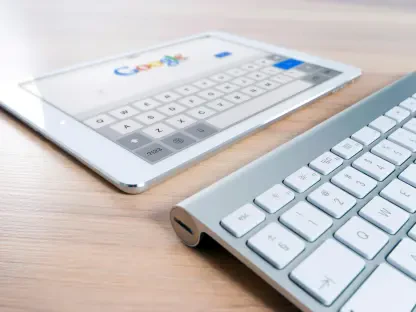For years, the MacBook Air seemed like Apple’s neglected stepchild: a solid device that only got the bare minimum periodic internal updates. And while it wasn’t necessarily outdated, it definitely started to stand out after Apple‘s most recent MacBook and MacBook Pro redesign.
Despite that, it has still remained wildly popular due to its convenient form factor, impressive battery life, and its price, of course. The MacBook Air has been the most affordable Mac OS device on the market—and was a common ‘gateway’ device into Apple’s ecosystem.
The fact that Apple almost ignored it for so long indicated that the ‘Air’ would be dropped from Apple’s range of products, especially given the new MacBook’s ultra slim profile and similar functionalities. However, this fall Apple surprised everyone and released the new MacBook Air. But what can it bring to the table compared to the existing MacBooks? Is it a fitting successor to one of this decade’s most popular ultraslim notebooks? Read on to find out.
Pricing
Let’s get the most controversial aspect out of the way before we dive into what the 2018 MacBook Air offers: the price. At $1200 for the 128GB SSD and 8GB RAM, it’s not a cheap machine—but this won’t come as a surprise for anyone who’s been keeping up with Apple’s recent releases. Most reviewers and consumers argue that $1000 would have been a fair price for this device and I’d have to agree. The price is even more confusing when you compare the Air to Apple’s other laptops. Firstly, it’s only $100 cheaper than the 2017 MacBook Pro, which packs significantly more processing power and has a better screen (at the expense of some added weight, shorter battery life, and a problematic second generation butterfly keyboard). Secondly, it’s also $100 cheaper than the 12” base model MacBook, which is much smaller and lighter and seems to have similar specs, except the storage capacity starts at a more reasonable 256 GB SSD. However, with the regular MacBook, you do lose Touch ID and only get one USB-C port.
In the end, this speaks more about Apple’s overall product range than the MacBook Air itself, but it will definitely make choosing one of the three models quite difficult. If you need all the processing power you can get for the money, the 2017 Pro is definitely the best of the three options. If portability is your priority, the 12” MacBook is the way to go. The Air seems to be the middle ground between the two.
Ports
This has been a hot topic in regards to Apple’s recent devices, given their penchant for stripping away ports that are still largely used by consumers in favor of portability. The new Air comes with two Thunderbolt 3 ports and (surprisingly) a headphone jack. That’s all you get. However, it might just be enough, if you’re willing to supplement it with the right accessories. Hub adapters like the ones made by Satechi can give your Air all the connectivity it needs to support your existing workflows. It is worth noting that unlike the 12” MacBook, the Air comes with actual Thunderbolt ports that support speeds up to 40Gbps, not just regular USB-C. That will definitely come in handy if you ever need to connect multiple high-res displays.
Screen
The Air finally has a 2560×1600 Retina screen and it’s beautiful. It’s not as brilliant as the MacBook Pro series’ screens, but the maximum 300 nits of brightness should be enough for most users—unless you’re planning on using it in direct sunlight. Based on my personal experience with the laptop, on the automated setting, the screen stays at ⅔ brightness most of the time while indoors, except when it’s very close to a stronger light source. Even when you’re close to a window, ¾ brightness is more than enough to see what’s on the screen comfortably. However, if color accuracy is essential to your work (e.g. photo editing, illustration, video editing), the Pro is the only one that supports the P3 wide color standard.
What’s surprising about the screen is how much you can fit on it, despite its size. 13” is the typical screen size for devices of this type, but the Retina resolution makes smaller text much more legible. After using a 17” inch gaming laptop as my daily driver, I thought the difference would be jarring, but now I prefer using the MacBook for basically everything—except games, of course.
Keyboard and trackpad
This might be an unpopular opinion, but the keyboard is probably one of my favorite things about the new Air. It comes with the third-gen butterfly keyboard, which is supposed to be free of the dust issues that plagued its predecessor—but only time will tell. It’s also more silent. But the best (or worst, to some) part is that even though there’s little travel between them, the keys are quite large and responsive. The tactile response is satisfying, but the keys require very little pressure in order to register. Even though they are close together, the keys are quite large, so the keyboard feels more spacious than it is. I find myself typing much faster and with fewer errors compared to a traditional keyboard. Also, the wedge shape of the notebook’s bottom half angles the keyboard in a way that makes it more comfortable to type compared to the Pro series, so if you’re a writer or editor, this will definitely make a difference.
It might be a jarring experience for someone coming from a full-on mechanical keyboard, but most regular laptop keyboard users will most likely adjust to it quickly. Nevertheless, since Apple’s new generation of switches has received a mixed reaction, I’d recommend checking it out in-store before making a purchase.
The trackpad is much less polarizing: it’s just great. Like on previous MacBooks, it’s absolutely huge, and multitouch gestures work like a charm, even though it will take some time to integrate them into your workflow if you’re coming from a Windows device. The trackpad itself doesn’t click, but it provides haptic feedback whenever you press on it. The default setting requires a little pressure to click, and it’s a godsend if you find yourself misclicking by brushing your hand against the touchpad (like me), but you can set it to the more traditional “touch to click” mode if you prefer.
Performance and battery life
I’ll start by saying that if maximum performance at any cost is what you’re looking for, the Air is clearly not for you. However, for many enterprise workloads, it’s the perfect device. Without getting into benchmarks, the Air can handle tasks like text processing, emailing, video conferencing without ‘breaking a sweat’, but you can also do some photo and video editing, as long as you don’t need to render 4K video or batch edit a bunch of raw photos. It works great as a daily driver for professionals that don’t need a lot of processing power for their daily tasks, but it’s also perfect if a designer or video editor needs to do some light editing on the go.
Speaking of “on the go”, according to Apple the MacBook Air is supposed to last through 12 hours of “wireless web” on a full charge. In practice, that number obviously depends on exactly what you’re doing on the web. Video streaming will definitely deplete the battery faster, but I’ve managed to squeeze around 8 hours of Youtube out of the device. The battery life gives the Air a slight edge over the 2017 13” MacBook Pro,
Build quality and portability
There’s not much to be said about the build quality of this machine if you’re familiar with Apple’s notebooks. It’s compact and light, yet solid. The unibody aluminum construction really does feel—and look—premium, even though it’s 100% recycled. It’s definitely very thin, even though the design is not as revolutionary as the first generation Air was. Still, few brands come close to reaching Apple’s attention to detail. For example, even the screws that hold the bottom lid in place match the finish of the laptop (Silver, Space Grey or Gold).
At 2.75 pounds (or 1.25 kg), the Air is easy to carry and hold with one hand. It’s still twice as heavy as the 12.9” iPad Pro, so it’s not exactly a ‘toss it in your bag and go’ device, but it’s still noticeably lighter than its predecessor and the MacBook Pro. In any case, it won’t be a hassle at all to move this device from your desk to the conference room or carry it around your house. The excellent trackpad also means that you can leave your mouse at home in most cases.
Security
The new Air also has Apple’s T2 chip, which handles security-related features such as Touch ID and gatekeeps access to the microphone and the camera. It also adds “Hey Siri” support, improves FaceTime HD camera image and sound quality, and improves the speed of FileVault startup disk encryption. One big advantage is that the T2 chip physically disables the microphone when the laptop lid is closed, preventing potential remote surveillance hacks from listening in on your conversations. AppleInsider’s article provides a more detailed rundown of exactly what the chip does. It’s worth noting that both the 12” MacBook and the 2017 13” MacBook Pro don’t have this chip, so if security is top of mind, you’re better off with the Air in this regard.
The Bottom Line
The 2018 MacBook Air is the perfect successor to one of the most popular notebooks of all time. Essentially, Apple took a well-loved product and made it current—but less obvious changes such as Touch ID and the T2 chip are what make it shine. Did the 2018 model’s unveiling come close to the moment when Steve Jobs pulled the first MacBook Air out of an envelope? Not really. But in this year’s model, Apple delivered what its customers had been requesting for the past few years: a truly modern MacBook Air. And as convoluted as Apple’s current lineup may be, there is definitely a place for the MacBook Air. If the 12” MacBook didn’t quite cut it for your workload needs, but the Pro was just too much power, the Air has now created a happy medium between the two.
If your company is invested in the Apple ecosystem, the Air is a well-rounded choice for most employees. For an “entry-level” macOS device, the Air is surprisingly capable, especially when you take into account the low-power chip it uses. It’s also the most secure MacBook currently available at this price point. It’s a device that can cater to the needs of an HR director, an editor, a social media manager, and even a developer. Its compact size and long-lasting battery also make it the perfect tool for a freelancer that’s always on the run. It might not have the sheer power of a MacBook Pro (it’s not supposed to anyway), but it might surprise you.









